INTRODUCTION
During his panel at the 2012 Comikaze, executive producer Michael Uslan described three lunches he had with director Tim Burton during the development of the 1989 Batman film. During these lunches, Uslan brought along some classic comics to help Burton visualise what a dark and serious Batman film might be like.
"I gave him the original run of Detective Comics, starting with #27, before Robin came in. I gave him the first issue with Robin. I gave him Batman #1 introducing the Joker and Catwoman. And then I gave him Denny O'Neil and Neal Adams' run. I gave him Steve Englehart and Marshall Rogers' run, which was really highly stylized."
The thesis essay posted on this site also states that the film Batman was heavily influenced by the early Batman stories of Detective Comics, in both imagery and content.
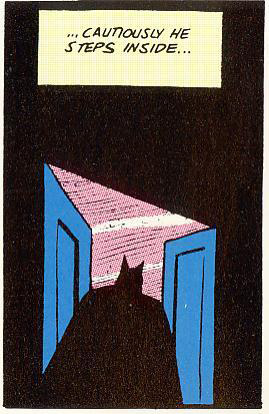
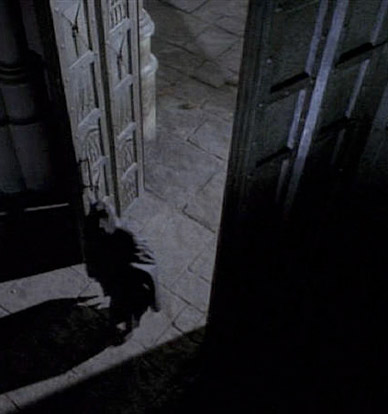
On left: Detective Comics #36 ("Professor Hugo Strange," 1940, Bob Kane and Bill Finger)
On right: Batman (1989)
What follows is an in depth analysis of Batman and its influences from the comics. Many of these parallels show a deliberate adaptation of the source material. Others are coincidental. But regardless of whether they were intentional or not, they are all parallels worth noting.
BATMAN AND THE COMICS
In the foreword to one of the Greatest Batman Stories Ever Told collections, Michael Uslan mentions that he showed Steve Englehart's story 'Night of the Stalker' (Detective Comics #439, March 1974) to Tim Burton. In his book, The Boy Who Loved Batman (read our review here), Uslan confirmed that the opening of the movie used 'Night of the Stalker' as inspiration.
Both the movie and the comic begin with an innocent family wandering the streets of Gotham, only to encounter a group of armed criminals - an intentional echo of the Wayne family's fatal encounter. Batman hears the screams and tracks down the criminals to bring them to justice. Unlike the comic, however, the family in the film survives the encounter.
Here are a few images from Englehart's 'Night of the Stalker'.
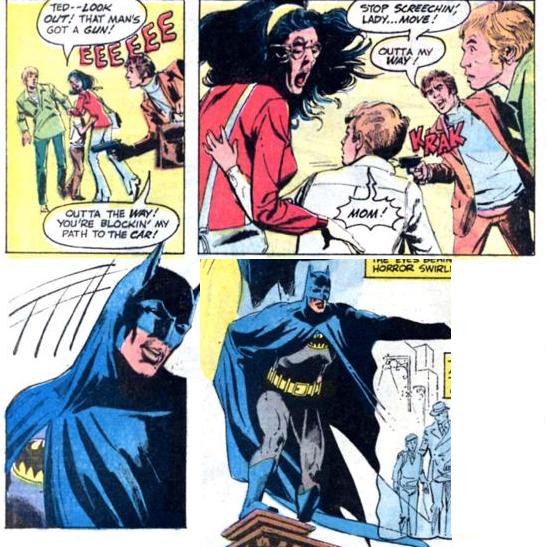
In both stories, after the crime is committed, one of the criminals reprimands the other for his methods while the other remains unrepentant.
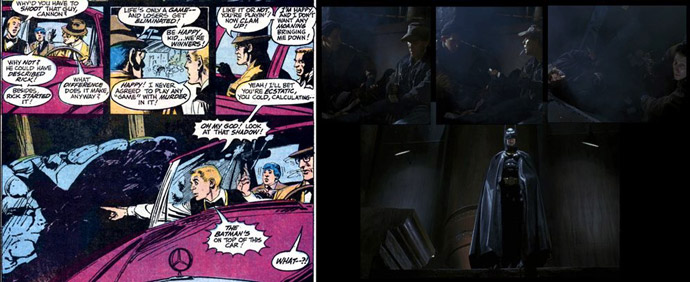

Later, Batman pretends to be killed in order to trick the criminals, thus making them more fearful later when he tracks them down.
Another noteworthy aspect of 'Night of the Stalker' is Batman's lack of dialogue throughout the story. He uses the same intimidation-through-silence technique that the Burton's Batman deploys in the movie.
The rooftop confrontation also reflects Batman's very first comic appearance in 'The Case of the Chemical Syndicate' (Bill Finger) in Detective Comics #27 (May 1939). Batman's first appearance in this story sees him fighting two goons on a rooftop right after they commit a crime.
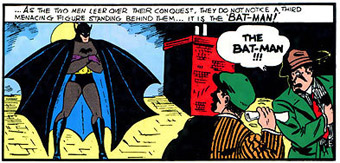
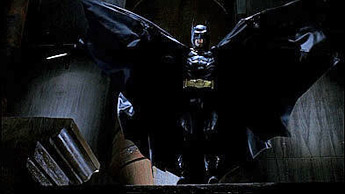
Like the Joker in Batman #1 (Spring 1940), the muggers are surprised to see that Batman is unaffected by bullets, unaware that he is wearing armor to protect himself.
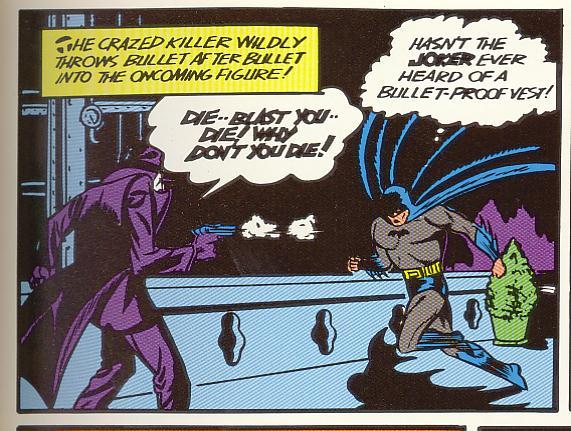
During the confrontation, Batman trips a fleeing criminal using a batarang with a rope attached to it. An example of this happening in the comics can be seen here in ‘The Batman Encyclopaedia’ (Detective Comics #214, December 1954).
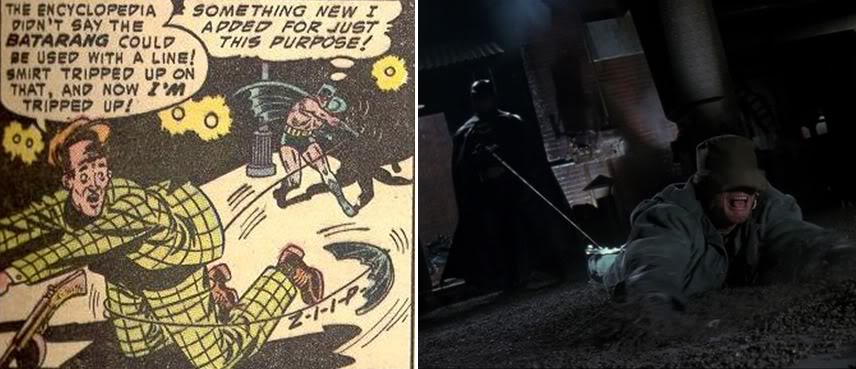
Batman's suit is pretty much the Neal Adams' Batsuit, with cowl and cape being seemingly one piece. yet detaching separately. Note how the cape drapes over his body when Batman is standing still.
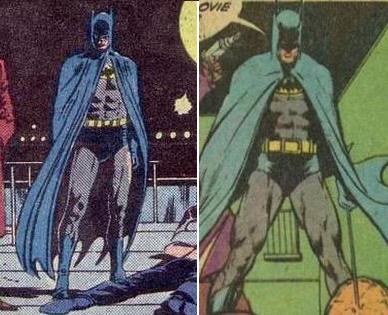
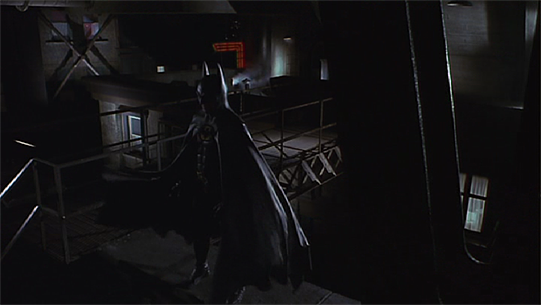
The chest emblem in the movie is different from the conventional design as it features two additional points. The emblems in The Dark Knight Returns and The Killing Joke also featured two extra points.

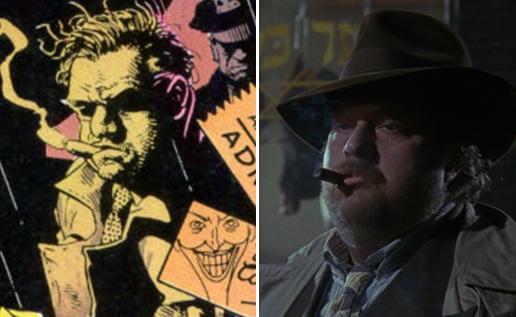 The character of Max Eckhardt is basically the Pre-Crisis Harvey Bullock under a different name. Nowadays, Bullock is recognised as a good guy in the comics. But originally the Pre-Crisis Bullock was a corrupt cop on the payroll of Hamilton Hill. He deliberately sabotaged many of Commissioner Gordon's operations and ultimately drove Gordon to suffer a heart attack in 'The Man of a Thousand Menaces (Batman #364, October 1983).
The character of Max Eckhardt is basically the Pre-Crisis Harvey Bullock under a different name. Nowadays, Bullock is recognised as a good guy in the comics. But originally the Pre-Crisis Bullock was a corrupt cop on the payroll of Hamilton Hill. He deliberately sabotaged many of Commissioner Gordon's operations and ultimately drove Gordon to suffer a heart attack in 'The Man of a Thousand Menaces (Batman #364, October 1983).
In the movie, Eckhardt looks more or less identical to the Bullock in the comics. He also shares his obnoxious personality and fondness for cigars.
The first time we see Wayne Manor in the movie is during a charity function hosted by Bruce Wayne. Amongst the guests is Commissioner James Gordon. The first time Gordon appeared in the comics was in 'The Case of the Chemical Syndicate' where he was attending a social engagement with Bruce Wayne. He had to leave suddenly upon receiving word a crime had been committed. Bruce, affecting an air of idle disinterest, was in reality observing Gordon's investigation with close attention. He then raced ahead as Batman to get an advanced start on the police in solving the case.
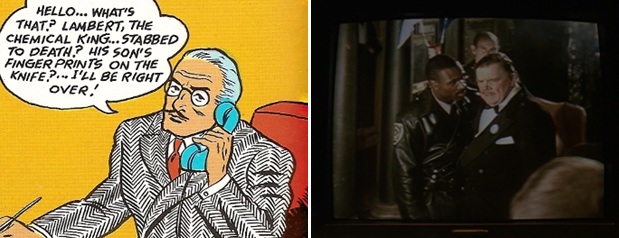
Accompanying Gordon at the party is his wife. While her first name is never given in the film, we can assume this is Barbara Gordon, James' wife from the Pre-Crisis era.
Also present at the party is district attorney Harvey Dent. Dent, originally called Harvey Kent, first appeared in 'The Crimes of Two-Face' (Detective Comics #66, August 1942). As in the comics, the movie version is depicted as a charismatic crusader working closely with the mayor and Commissioner Gordon to take down the organised crime rackets in Gotham. Over the course of the film he starts to display signs of buckling under pressure; subtle hints of the repressed anger that will one day surface when he becomes Two-Face.
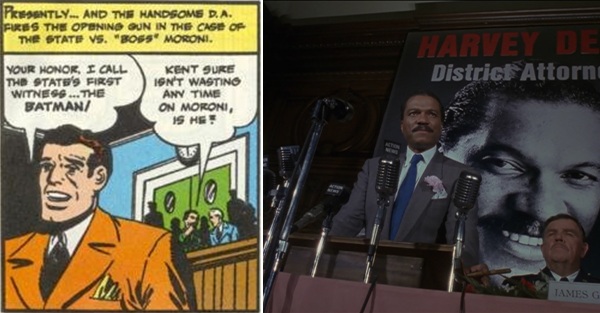
The portrayal of Bruce Wayne as an idle recluse who doesn't seem to care what's going on in the world is very much in line with how he was characterised in the early comics, before Robin or Alfred were introduced.
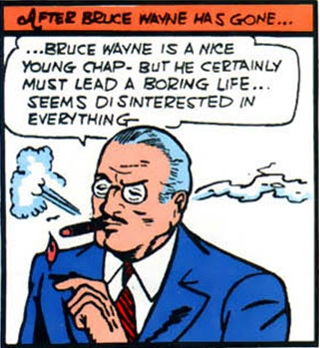
The movie contains a number of references to the Corto Maltese, a war-torn island that was mentioned throughout Frank Miller's The Dark Knight Returns (1986).
Later in the movie, Jack Napier holds up a Joker card. The design is similar to the one from Joker's first appearance in Batman #1, with the smiling Joker in a jester hat.
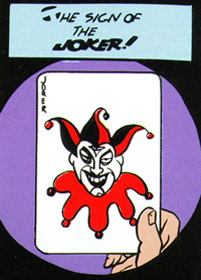
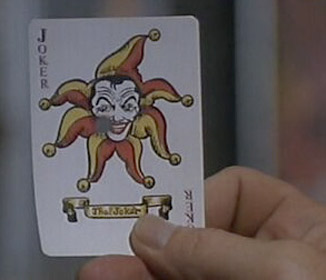
In both the film and in Detective Comics #27, Batman's second appearance in the story is stopping a crime at a chemical factory:
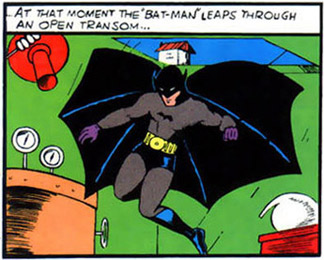
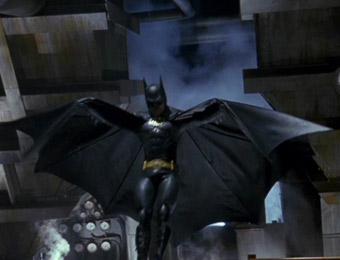
Here, the villain falls to his doom into a vat of chemicals.
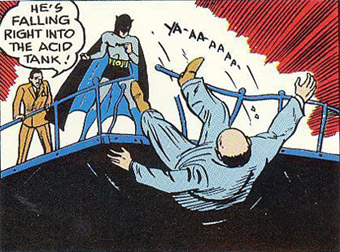
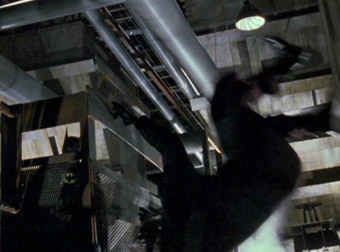
Jack Napier's fall into the chemicals reflects the origin of the Joker in the Pre-Crisis comics, as first depicted in 'The Man Behind the Red Hood' (Detective Comics #168 by Bill Finger).
When in need of an escape route, the Golden Age Batman would use gas pellets to disorientate his enemies.
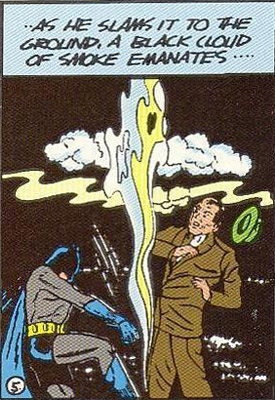
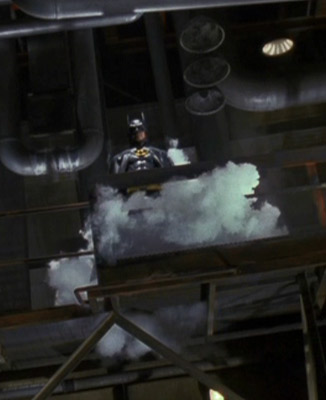
Much like the origin in 'The Man Behind the Red Hood', the Joker's insanity is triggered by his realization about his appearance upon looking at his reflection.
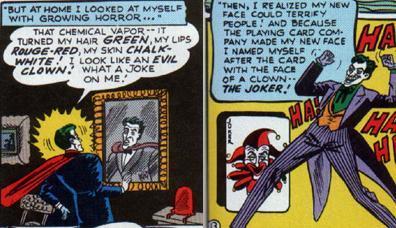
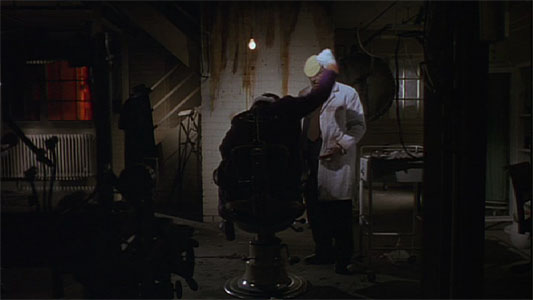
The moment where he sees his reflection for the first time, doubles over as if crying, then starts laughing maniacally, is also clearly influenced by Alan Moore's The Killing Joke (1988); a copy of which Tim Burton is said to have carried around with him on set.
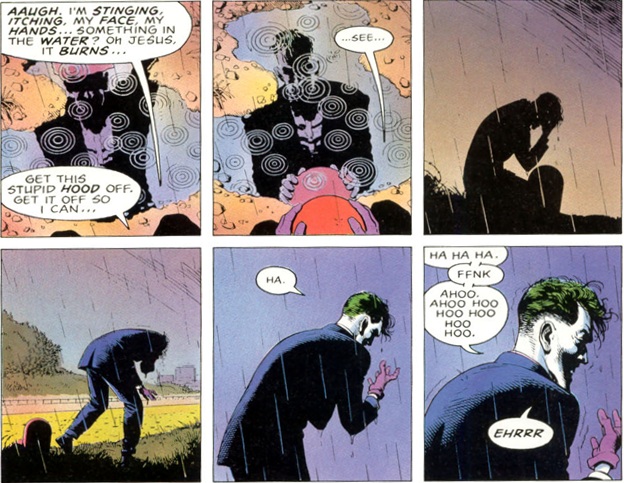
When the Joker does appear in the movie, he looks like the splitting image of Dick Sprang's Joker, right down to the hairstyle and eyebrows:
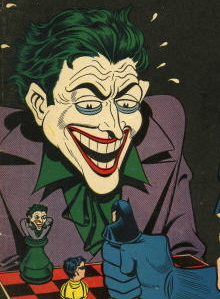
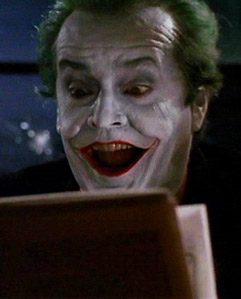
In both the film and his first appearance in Batman #1, the Joker kills a mobster who'd previously threatened his life by shooting him to death. In the comic it's a gangster named Brute Nelson; whose death, according to Joker, "settles an old score". In the movie the Joker's victim is his former boss, Carl Grissom.
Also reminiscent of the first Joker story in Batman #1 is the way the Joker talks to himself as he concocts his latest scheme.
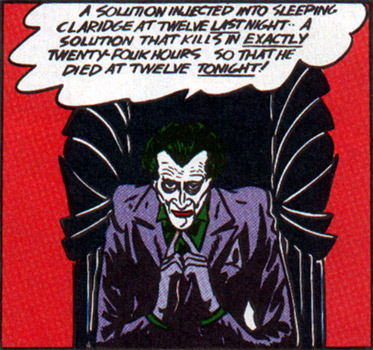
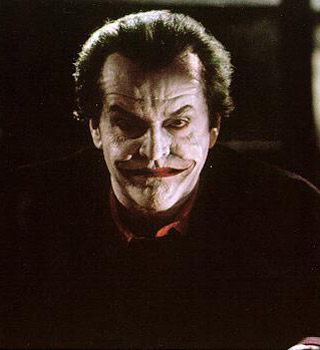
Later in the film, the Joker summons Grissom's former associates to a meeting. To mask his features, he covers his face in skin coloured makeup. The Joker in the comics has used similar cosmetics to disguise himself on several occasions, dating back to his first appearance in Batman #1.
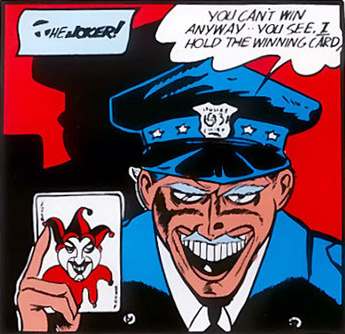
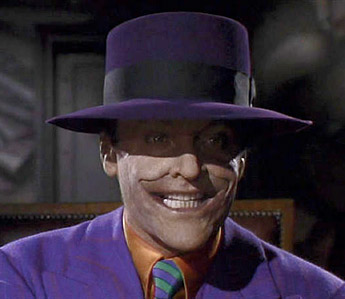
Another example of him doing this can be seen in Detective Comics #45 (November 1940), 'The Case of the Laughing Death' by Bill Finger.

When Antoine Rotelli objects to the Joker's takeover, the Clown Prince of Crime electrocutes him using a high-voltage electric buzzer. The Joker's buzzer is one of the many gag-style weapons he's used in the comics over the years.

The Joker then conducts a one-sided conversation with Rotelli's corpse. He does the same thing in The Killing Joke. In both stories the person he's talking to was killed with a lethal handshake.
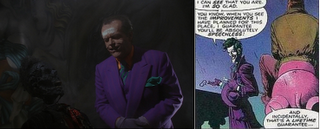
The idea of Bruce visiting Crime Alley each year on the anniversary of his parents’ deaths comes from Denny O’Neil’s ‘There is No Hope in Crime Alley!’ (Detective Comics #457, March 1976).
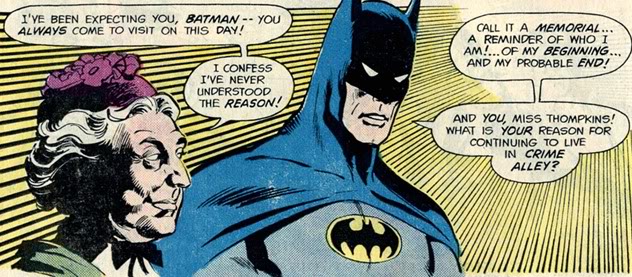
In the movie, Bruce leaves two roses – one for Thomas, one for Martha – on the exact spot where his parents were killed. This detail was later incorporated into the comics, as seen in this example from Detective Comics #782 (July 2003).
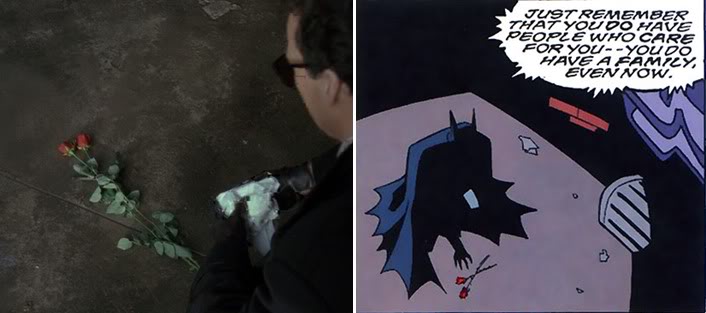
Bruce first sees the Joker in action when he murders Vinnie Ricorso on the steps of City Hall. The Joker's outfit here is different from his trademark purple costume. Instead it resembles the suit he wears on Jim Aparo's cover art for Batman #429 (January 1989), which was part of the Death in the Family story arc.
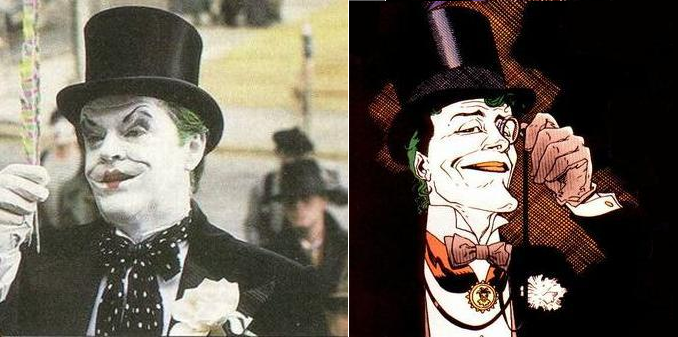
The Joker's always had a big ego in the comics, growing enraged whenever someone else steals the spotlight from him.
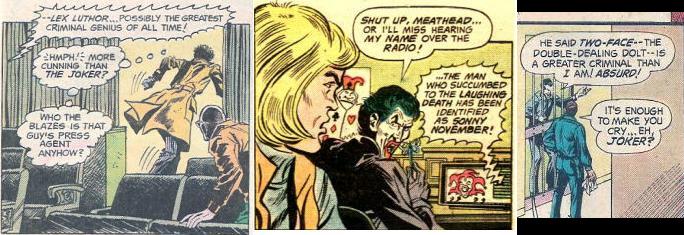
In revenge for Batman stealing his press (as well as creating him by dropping him the vat of chemicals), the Joker releases an advertisement for the poison he's released into the city. The Joker in the comics has also been known to announce his crimes in advance. First on the radio in Batman #1. Then on television in stories like Steve Englehart and Marshall Rogers' 'The Laughing Fish' (Detective Comics #475, February 1978).
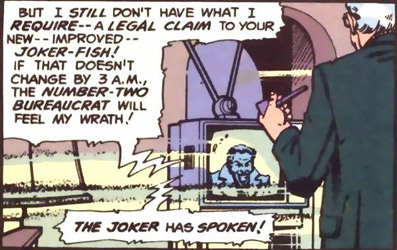
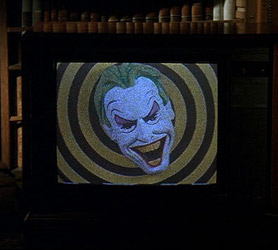
It's interesting to note that both Englehart and Rogers were involved with the production of Batman. Artist Marshall Rogers drew pre-production art for the film while Englehart wrote two script treatments. Englehart's version featured Silver St. Cloud and Rupert Thorne in place of Vicki Vale and Carl Grissom. You can read the details of Englehart's involvement here:
http://www.steveenglehart.com/Film/Batman%20movie.html
The Joker's moll, Alicia Hunt, seems to have been inspired by the comic character Circe, who first appeared in 'Black Mask: Losing Face' (Batman #386, August 1985). Circe and Alicia were both the girlfriends of murderers who later became disfigured psychotic supervillains (Roman Sionis/Jack Napier). Both women were narcissistic models, and both lived in apartments decorated with images of their own face.
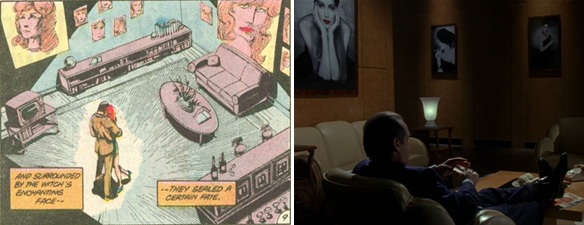
In both stories the women's ex-boyfriends are transformed into disfigured maniacs (Black Mask/Joker) and return to lay claim to their former lovers. Black Mask intentionally disfigures Circe using a poisonous cosmetic he'd previously tried to market.
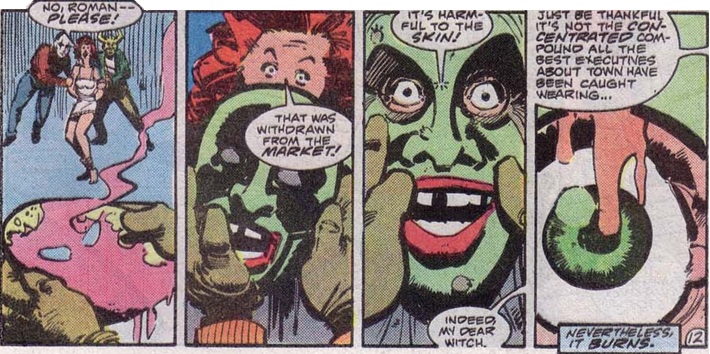
We never see exactly what the Joker does to Alicia, but evidently it's a similar act of mutilation that leaves her permanently scarred. Black Mask and the Joker both keep their women around as trophies, forcing them to wear blank white masks to hide their scars.
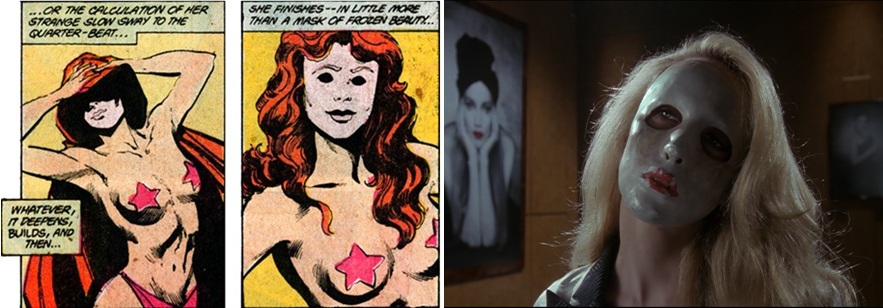
Beneath their masks, the once-beautiful women are horribly disfigured.
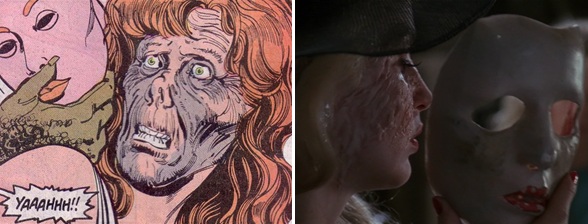
Both women are apparently driven insane by their ordeal and fall into submissive trance-like states. In both stories, the person who mutilated them used their features as a canvas to express their artistic vision. Roman Sionis had previously used Circe's face to exhibit his Janus cosmetics line back when he was a legitimate businessman. The Joker uses Alicia's face to illustrate his "homicidal artist" philosophy.
When Bruce researches Jack Napier's background he discovers the Joker has an aptitude for art. This is hardly new to the character. Note the panel mentioning the Joker's art treasures here in 'The Case of the Laughing Death'.
In keeping with the art theme, the Joker later crashes a museum wearing a beret. He dresses in a similarly outrageous manner in 'The Joker's Happy Victims' (The Batman Kellog's Special, 1966).
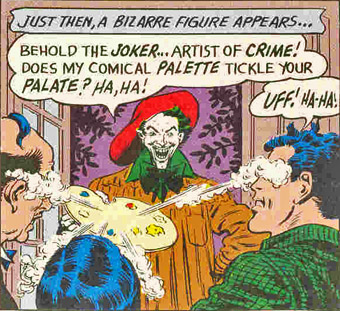
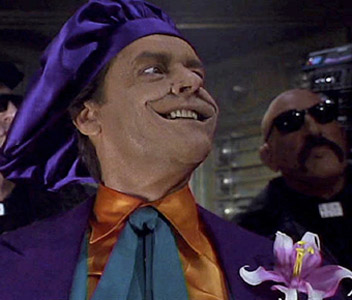
It is during this scene that the Joker dances to Prince's 'Partyman'. The Joker has danced with his goons in several comics over the years. One of the more famous examples would be in The Killing Joke.
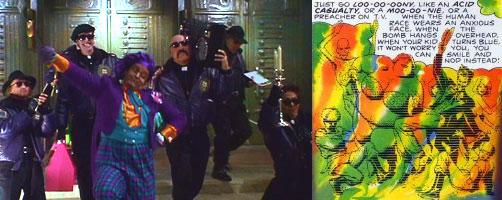
The Joker has also been shown to dance to popular songs. In 'The Last Ha Ha' (Joker #3, October 1975) he sings his own demented version of 'Zip-a-Dee-Doo-Dah' while dancing to celebrate the death of one of his victims. He and his henchmen dance to 'There's No Business Like Show Business' in 'Sherlock Stalks the Joker' (Joker #6, April 1976).
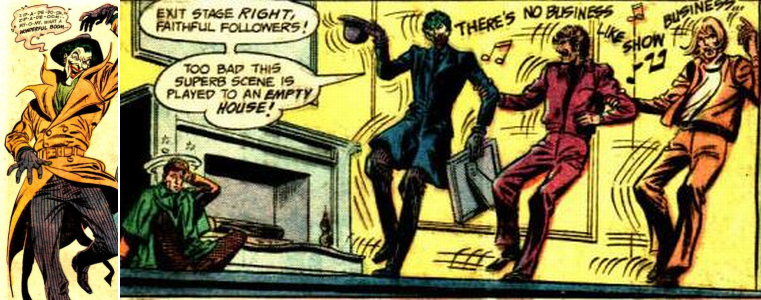
The Joker also delights in destroying priceless works of art, as seen here in 'A Clash of Symbols' (Detective Comics #617, July 1990).
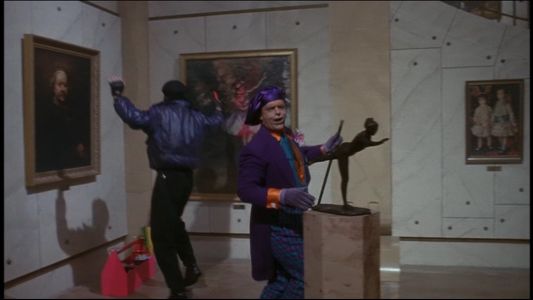
The Joker makes a point of stopping Bob from slashing Francis Bacon’s 1954 painting ‘Figure with Meat’. In the Elseworlds story JLA: The Nail (1998), the Joker slaughters Batgirl and Robin and compares his work to a Francis Bacon painting. Evidently, both versions of the Joker share an affinity for Bacon’s work.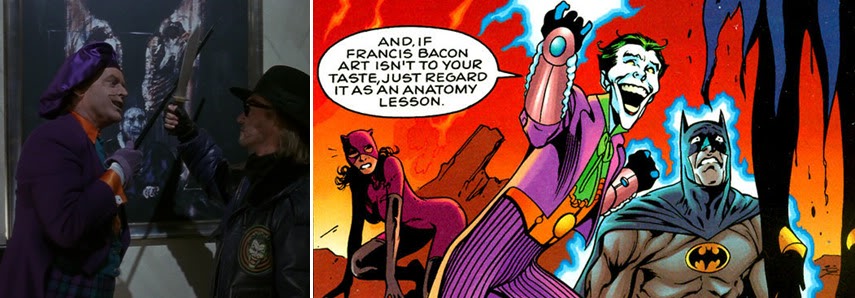
The Joker tries to spray Vicki with an acid-squirting flower. This is another weapon he's used many times in the comics. The following example is from 'The Last Laugh!' (Detective Comics #570, January 1987).

When Vicki splashes the Joker with water he quotes the Wicked Witch of the West from The Wizard of Oz (1939): “I’m melting! I’m melting!” The Joker quotes the same line in ‘You May See a Stranger’ (Batman: Dark Detective #2, July 2005, Steve Englehart and Marshall Rogers).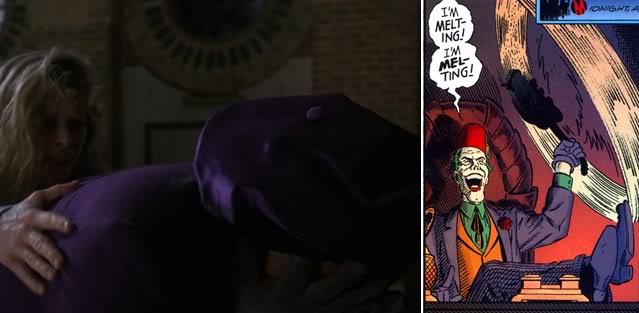
Batman is known for making grand entrances by crashing through the ceiling.
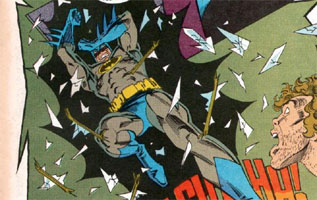
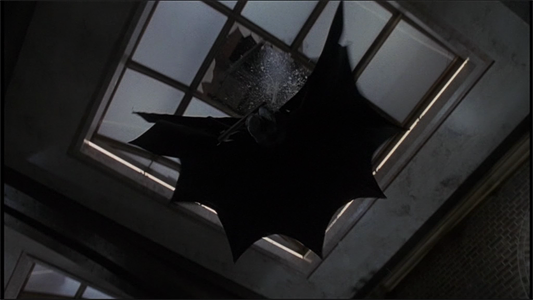
It's during the sequence where Batman rescues Vicki that we are introduced to the Batmobile. In his introduction to Batman In The Fifties, Michael Uslan states that the "Batmobile of 1950" was the primary influence on Anton Furst's Academy Award winning design.
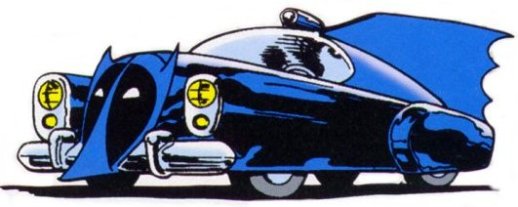
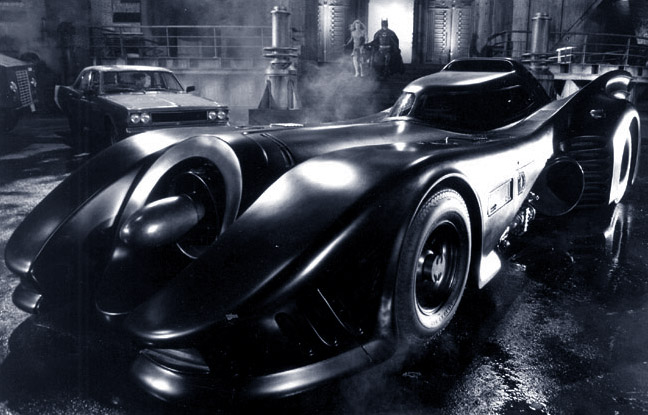
The Batmobile of 1950 gave the car its trademark "long" look as well as the flaming afterburner at the back of the vehicle. Both aspects were incorporated into Furst's design.
Steve Englehart claims the movie version of Vicki Vale was based on Silver St. Cloud. In fact the Vicki Vale in the comics preceded Silver by several decades. She was first introduced in ‘The Scoop of the Century!’ (Batman #49, October 1948), where she set out to chronicle Batman's exploits with her camera.
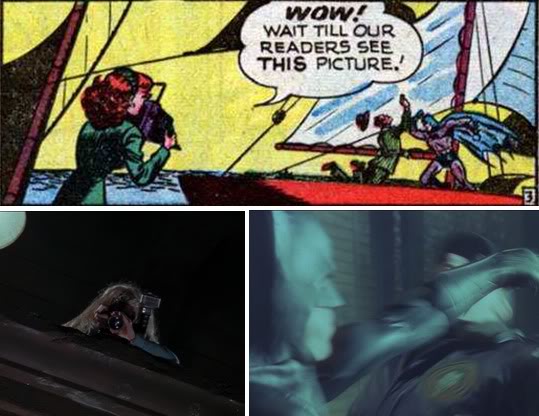
In the movie, the Joker's thugs succeed in overpowering Batman and then try to remove his mask. This is similar to a scene from the Joker's second appearance in Batman #1, 'The Joker Returns'. In this story the Joker's assault on a museum leaves Batman unconscious. The Gotham City police attempt to unmask him...
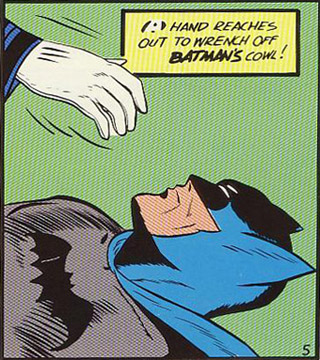
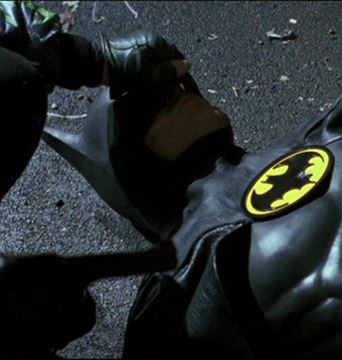
...only for Batman to come back to life, having played possum the whole time.
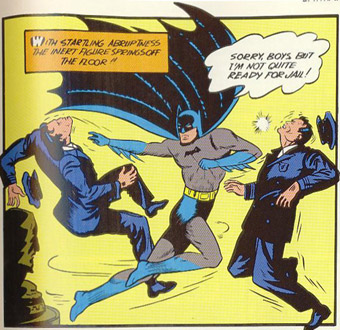
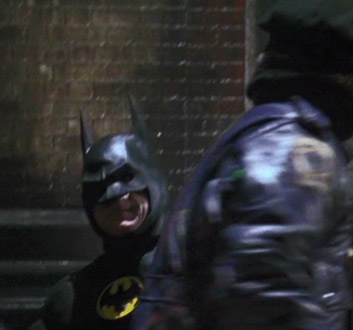
A similar scene also occurrs in ‘Clue of the False Faces!’ (Detective Comics #430, December 1972).
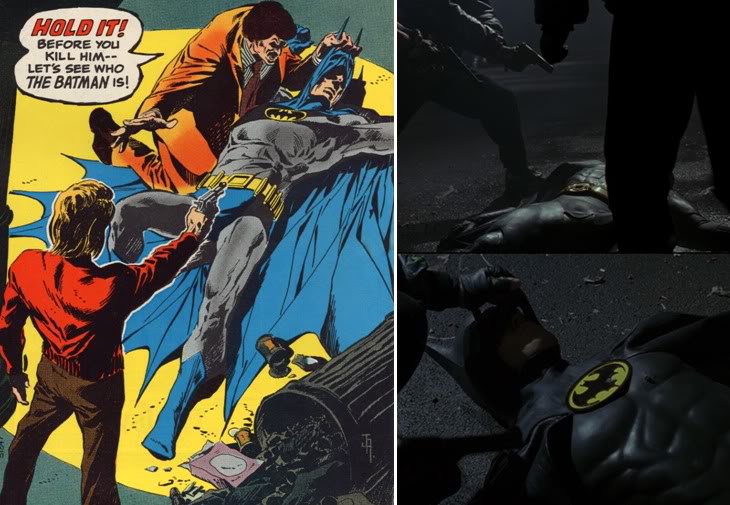
After dealing with the thugs, Batman and Vicki go for a ride in the Batmobile. Batman remains mysteriously taciturn through this scene, evoking a similar moment from 'Batman Versus The Vampire, Part One' (Detective Comics #31, September 1939) where Batman drives with Bruce Wayne's fiancé, Julie Madison, and refuses to speak to her.
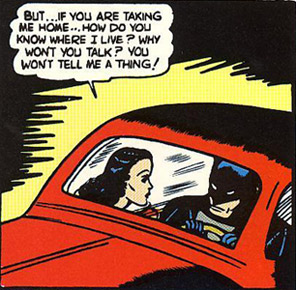
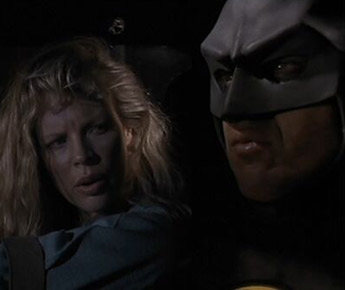
Later in the scene, Vicki screams when the Batmobile drives straight through a rock wall. But it turns out the wall is merely a hologram. This may have been influenced by a similar moment between Batman and the Carrie Kelly Robin in The Dark Knight Returns. According to Les Daniels's Batman: The Complete History, The Dark Knight Returns was one of the comics Michael Keaton read when researching the role.
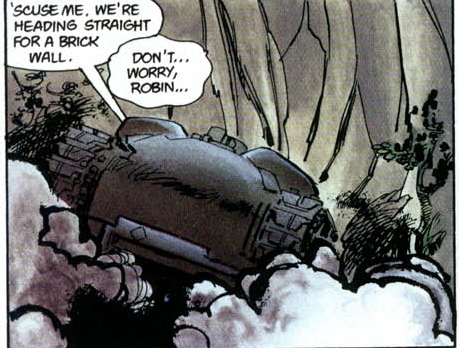
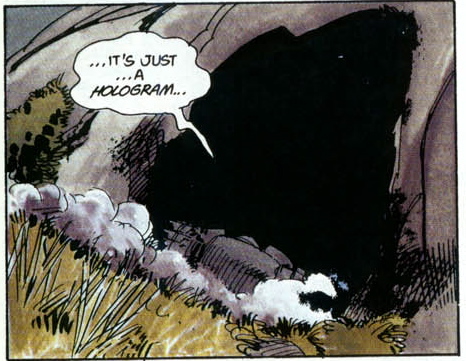
Batman also took Vicki to the Batcave in her debut story, ‘The Scoop of the Century!’.
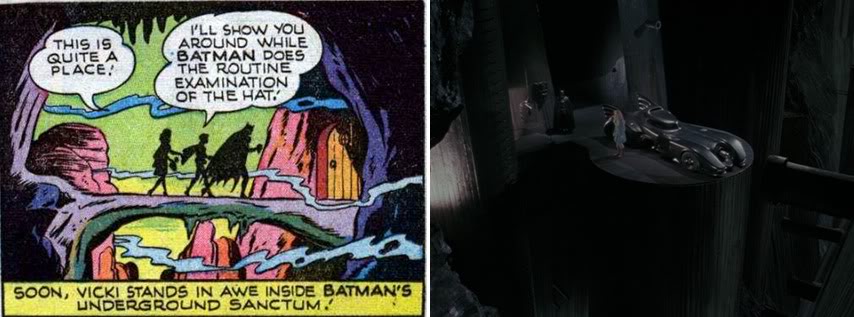
Batman explains to Vicki that the Joker's poison only works when beauty products are mixed. This is similar to the binary compound that was used to kill G. Carl Francis in Englehart and Rogers's 'The Laughing Fish'.
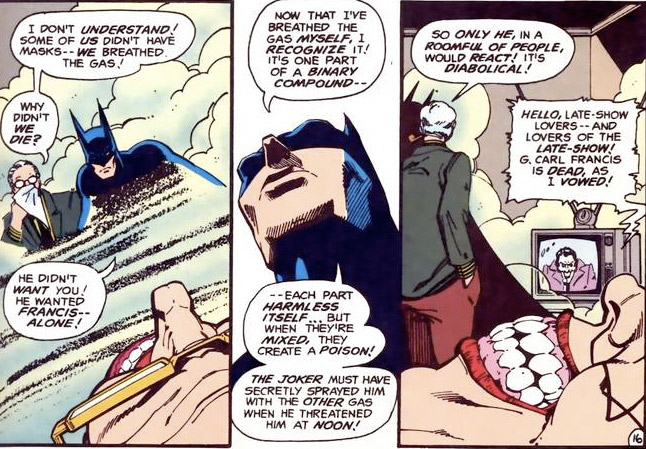
After Vicki wakes up at home, there is an interesting overhead shot of her lying on her bed which may be a deliberate panel recreation. The original panel in question comes from ‘Vicki Vale’s Secret!’ (Batman #73, October 1952).
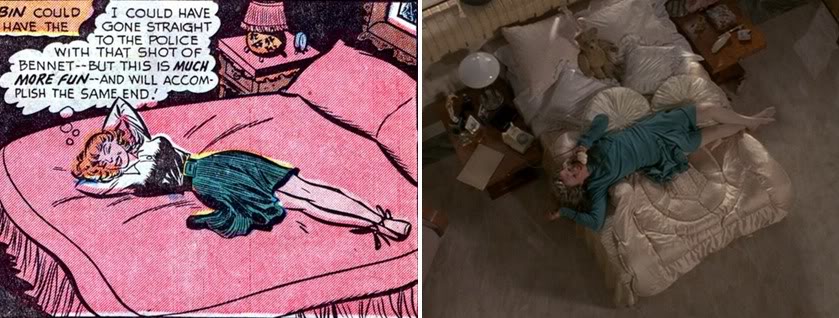
This particular panel was occasionally reused in later comics whenever Vicki was mentioned. It more or less became her signature pose.
A reused panel in Batman #261 (March 1975).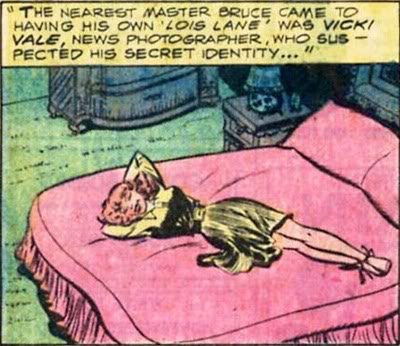
Bruce Wayne attempts to give flowers to an unimpressed Vicki. This is another scene that recalls Vicki's first comic story, ‘The Scoop of the Century!’.
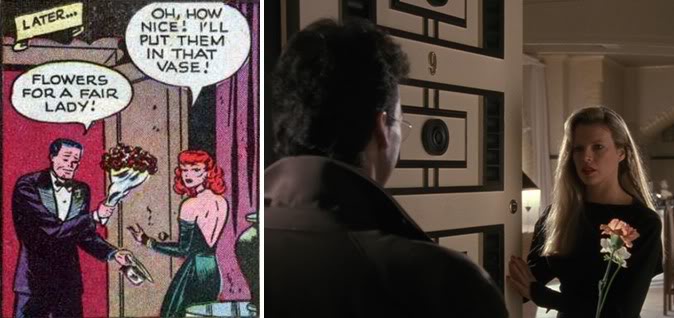
Bruce's attempts to patch things up with Vicki are ruined when the Joker shows up. The Joker's insane romantic interest in Vicki is similar to his obsession with Dinah Lance in 'A Gold Star for the Joker' (Joker #4, December 1975). In both stories the Joker becomes fixated on a beautiful woman who happens to be the girlfriend of a superhero (Batman/Green Arrow). His attempts to woo this woman become increasingly violent and insane, and her boyfriend ultimately has to intervene in order to save her.
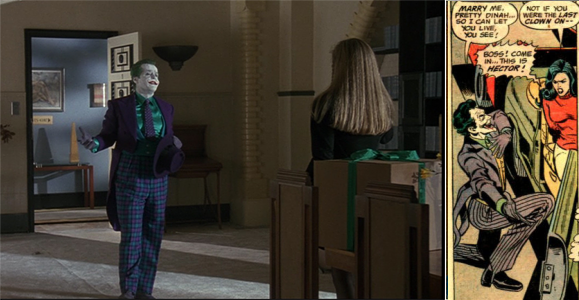
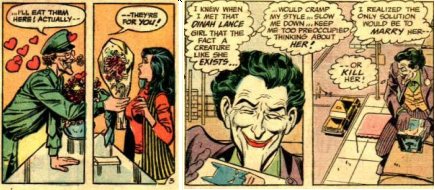
The scene in Vicki's apartment also has strong parallels with the scene where Barbara Gordon is crippled in The Killing Joke. In both the movie and the comic we see a man and woman talking in an apartment. The door bell rings and the woman answers it. The Joker then enters the apartment flanked on either side by his goons. The scene ends with one of the room's occupants being rendered unconscious while the other is shot by the Joker.
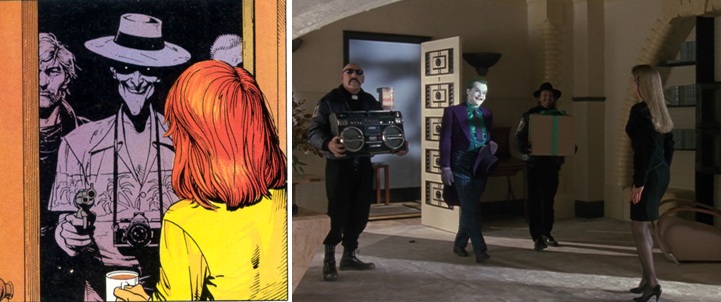
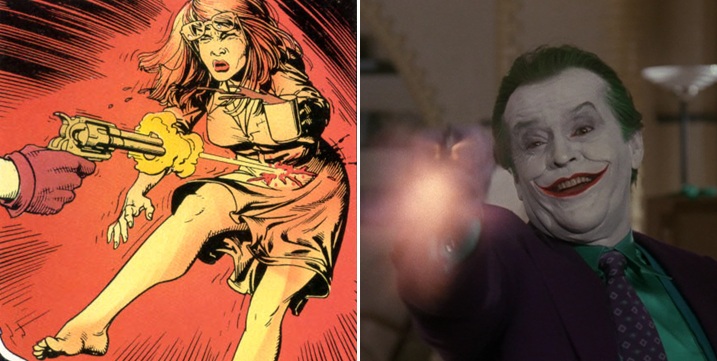
The two goons accompanying the Joker in The Killing Joke may have inspired the look of his henchmen in the film. In particular, the goon standing to the left of the Joker as he enters the apartment resembles Bob.
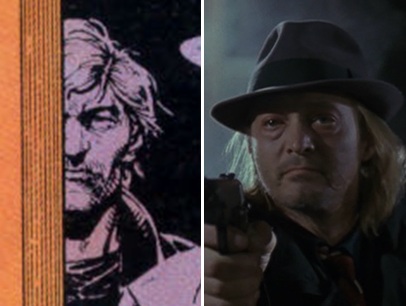
While the thug that beats up Gordon resembles the henchman Batman fights in the cathedral at the end of the movie.
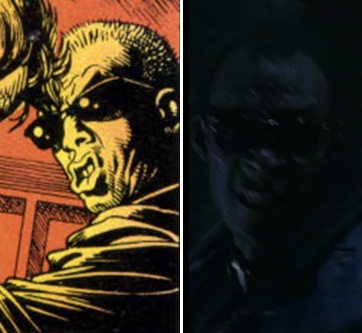
The apartment scene ends with the Joker rendering Vicki unconscious with a non-lethal prank involving flowers and a spring-loaded hand. A similar moment occurs in 'Dreadful Birthday, Dear Joker!' (Batman #321, 1980, Len Wein).
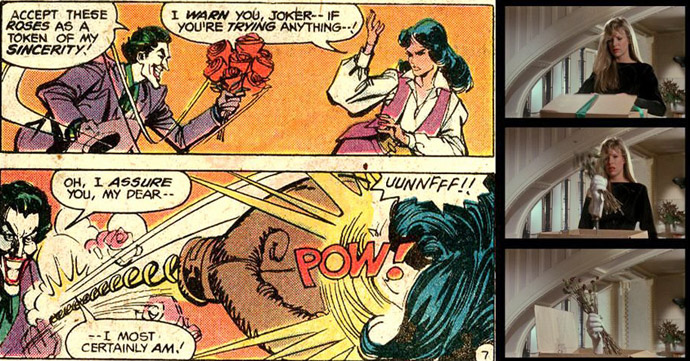
When the Joker next appears on TV, he announces his intent to act at midnight. This seems to be the character's favorite time to kill, because he also announces his plan to kill at midnight in Batman #1.
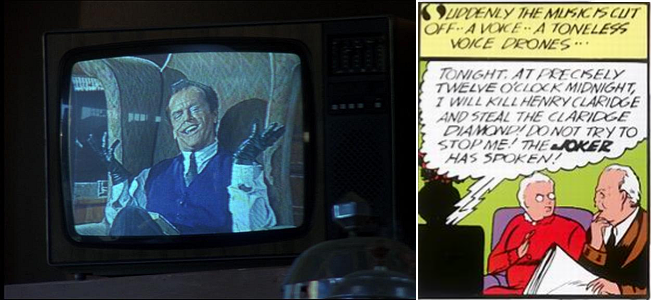
The Joker's message prompts Bruce to reflect on the night his parents were killed. His brooding pose is similar to the one in Detective Comics #33, which was the first comic to depict his origin. Detective Comics ran from issues #27-32 without revealing Batman's origin or the death of his parents, similar to how the film delays revealing his back story until the final act.
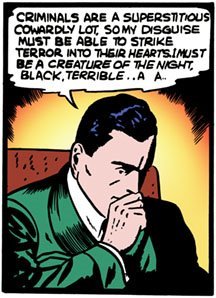
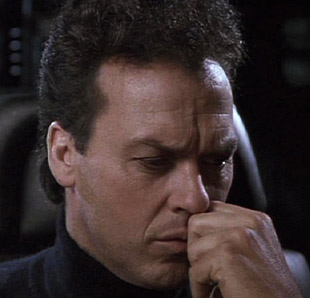
In the haunting flashback scene, Thomas, Martha, and young Bruce Wayne are shown leaving the Monarch Theater. In 'The Man Behind the Red Hood' the Monarch Playing Card Co. was the name of the company the Red Hood robbed on the night he became the Joker. The police attempted to catch him in the act, so he fled into the adjacent chemical factory and tried to outmanoeuvre his pursuers by leaping into a vat of chemicals.
'Monarch' has been referenced in later comics as the name of the cinema Bruce and his parents visited the night they were murdered.
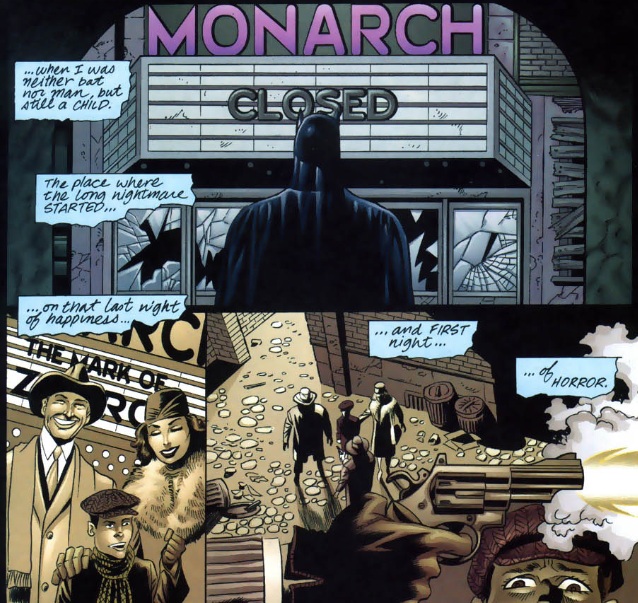
During the flashback sequence, Jack Napier's partner grabs Martha Wayne's pearl necklace and breaks it. This is similar to the flashback sequence in Frank Miller's The Dark Knight Returns.
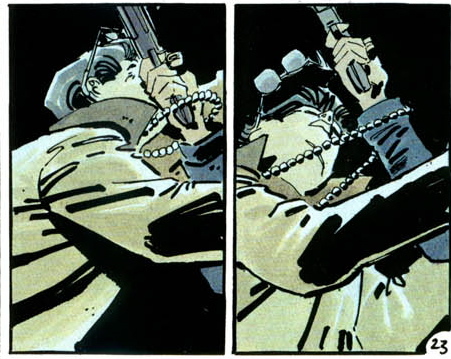
Towards the end of the film, the Joker holds his own parade where he throws money to the people of Gotham. This sequence is similar to the climax of 'Dreadful Birthday, Dear Joker!' (Batman #321, 1980). In both the film and the comic, the Joker lures a crowd of spectators to a mass murder disguised as a funhouse party. He addresses the crowd in the manner of a ringleader talking to a circus audience, using a public stage to settle his personal score with Batman. Also note that the Joker's parade float in the movie resembles a giant pink and white birthday cake, just like the one in the comic.

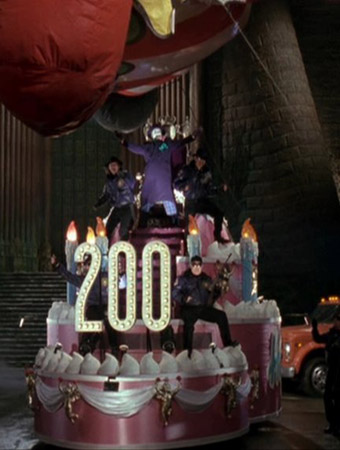
But it turns out the whole parade is a death-trap and the Joker's parade balloons are filled with lethal laughing gas. In ‘Laugh, Town, Laugh’ (Detective Comics #62, April 1942), the Joker poisons some of his victims using balloons filled with laughing gas.
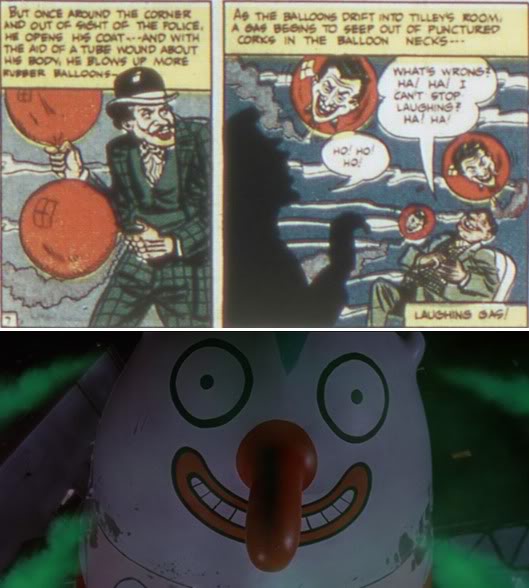
The parade scene also has similarities with the final chapter of A Death in The Family, specifically regarding the Joker's fondness for "large dead crowds".
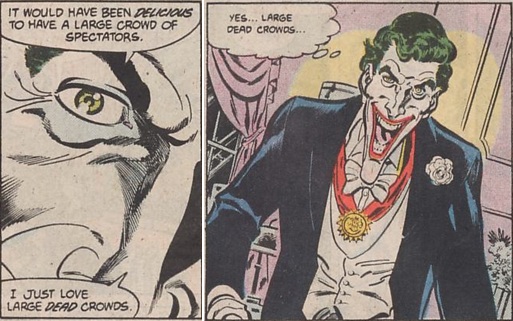
Towards the end of this story the Joker goes to address the U.S. General Assembly on behalf of Iran, but instead unleashes his lethal gas upon the crowd. Just like he does in the movie.
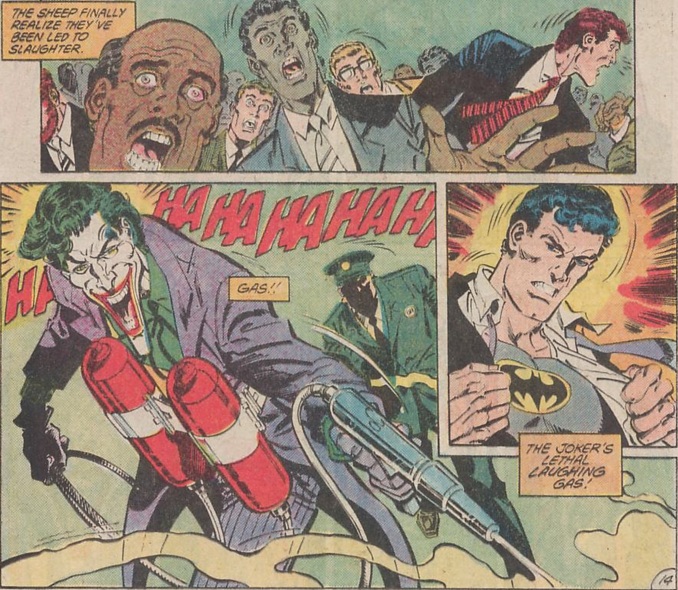
Luckily Batman comes to the rescue in the Batwing. While the Batwing had been dubbed the "Batplane" in the comics, the vehicle in the movie may have been inspired by the Batplane's precursor, The Bat-Gyro, which was introduced in 'Batman Versus The Vampire, Part One'.
Bob Kane would frequently draw it against the moon...
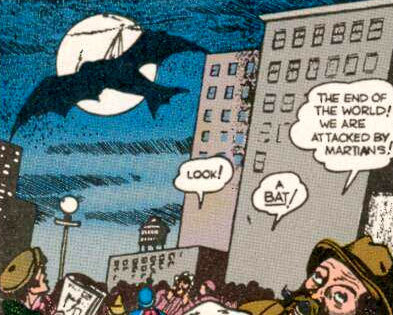
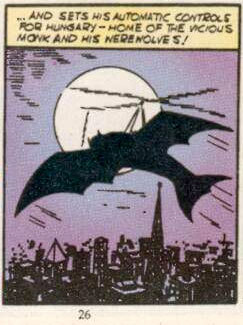
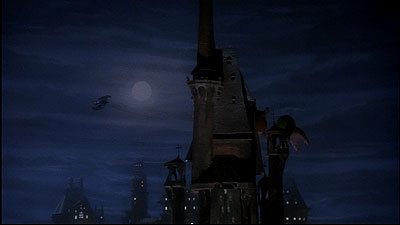
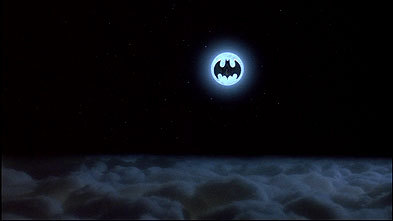
The Batwing in the movie draws visual influence from the Batplane in the comics as well.
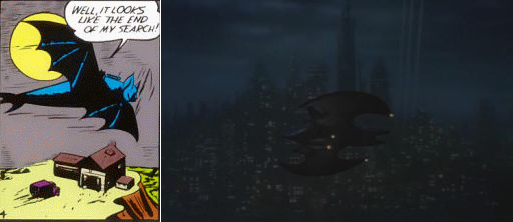
Furious that Batman took away his poisoned balloons, the Joker decides to take his anger out on his right hand man, Bob. The Joker in the comics has also been known to spontaneously kill his own henchmen for fun, as seen here in 'The Laughing Fish', when he shoves one of his goons in front of a truck.
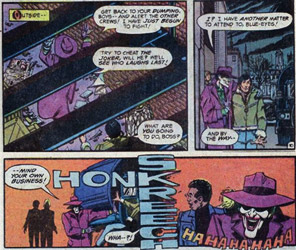
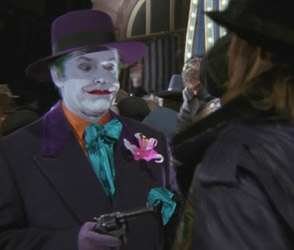
In one of the film's more controversial moments, Batman shoots at the Joker's thugs with a machine gun attached to the Batwing. This moment is lifted from the finale of 'The Giant of Hugo Strange' (Batman #1, Spring 1940), where Batman open fires on Hugo Strange's men from the Batplane. It was referenced again in the finale of The Dark Knight Rises, when Batman shoots at Talia's truck.
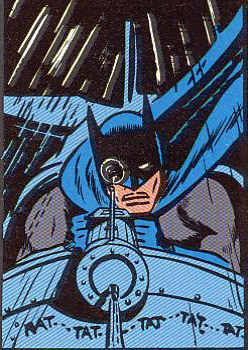
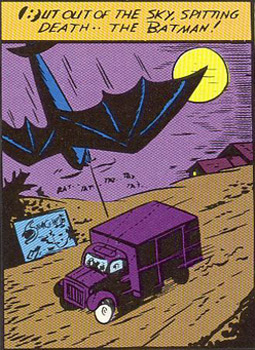
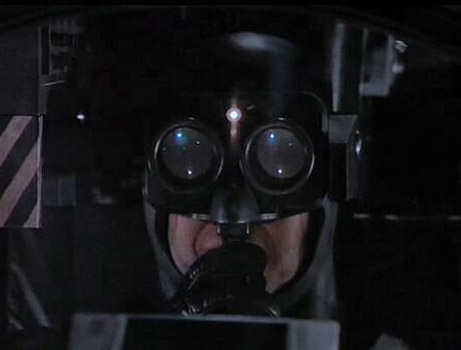
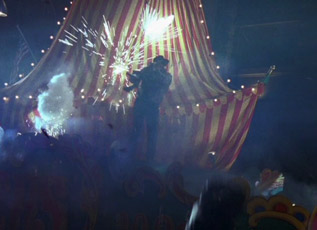
When the Joker holds Vicki hostage, he pretends to shoot himself with his own gun. But instead of a bullet it ejects a miniature flag with the word "BANG" written on it. The Joker's "BANG" gun has also appeared in the comics, as illustrated by this example from 'Dreadful Birthday, Dear Joker!' (Batman #321, 1980).
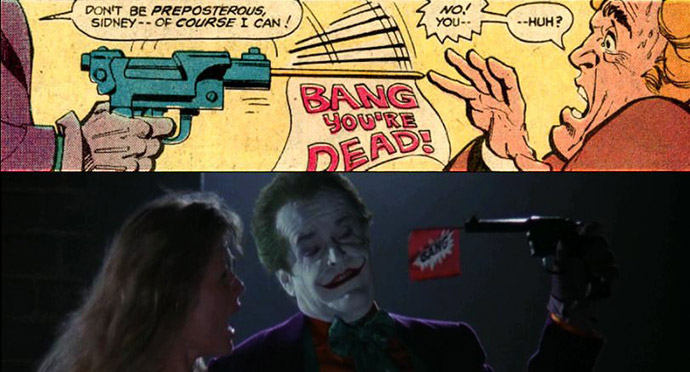
Batman chases after the Joker and faces off against his goons in the cathedral bell tower. He takes down the last goon by disappearing over a ledge and then surprising him with a head scissor move. He uses the exact same trick against Deadshot in 'The Deadshot Ricochet' (Detective Comics #474, 1977).
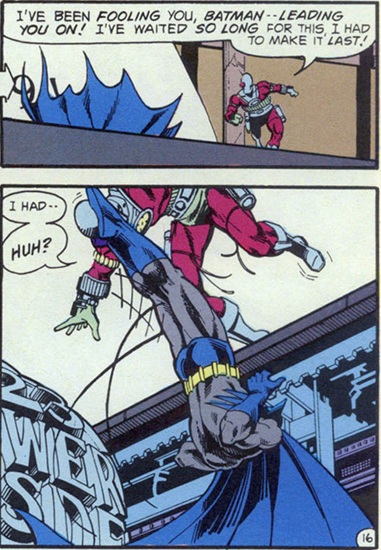
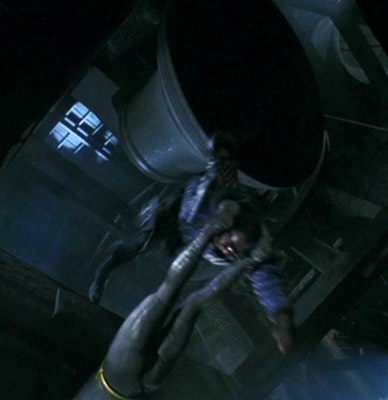
When Batman and Vicki are hanging onto the cathedral, the Joker tries to trick Vicki using a phony hand. The Joker plays a similar gag on Batman at the end of 'Dreadful Birthday, Dear Joker!'.
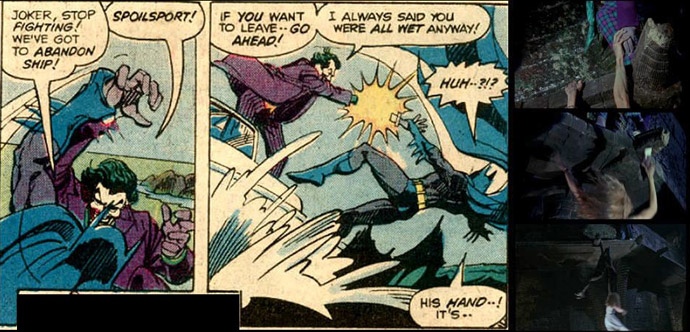
During their final showdown in the movie, the Joker taunts Batman and calls him ‘bat breath’ and ‘batsy’. This is exactly the kind of petty taunting the Joker does in the comics. Here’s an example from Batman: A Death in the Family (1988-1989).
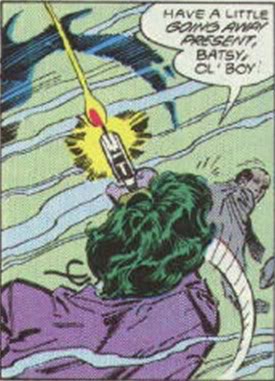
The Joker attempts to kill Batman while the Dark Knight is hanging from a precipice atop a tall building, only to fall off the building himself. This recalls their showdown at the end of 'The Riddle of the Missing Card' (Batman #5, Spring 1941).
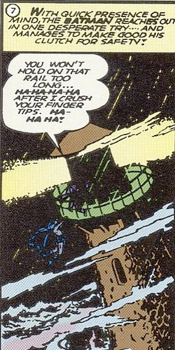
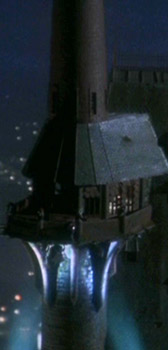
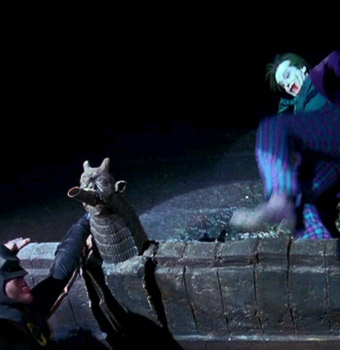
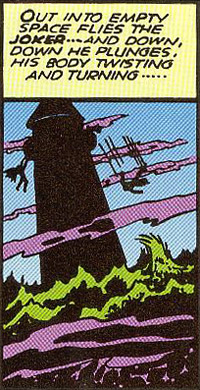
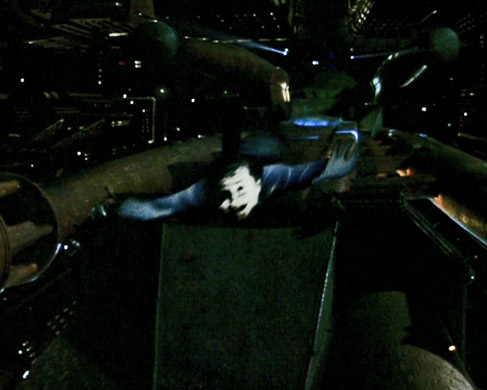
Then final showdown is also reminiscent of a scene from 'Did Robin Die Tonight?' (Batman #408, June 1987), in which Batman fights the Joker on top of a large gothic building while the latter is attempting to make a getaway. The Joker knocks Robin over the battlements, forcing him to hang on for dear life. While Batman is distracted trying to help Robin, the Joker tries to make his escape by grabbing a rope ladder hanging from his Jokercopter.
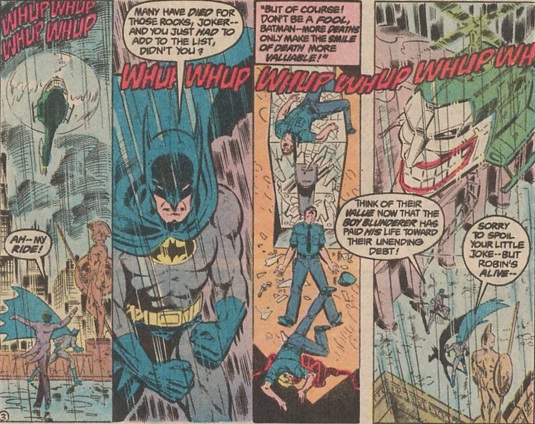
Batman uses a projectile weapon which causes the Joker to lose his grip on the ladder and fall back down.
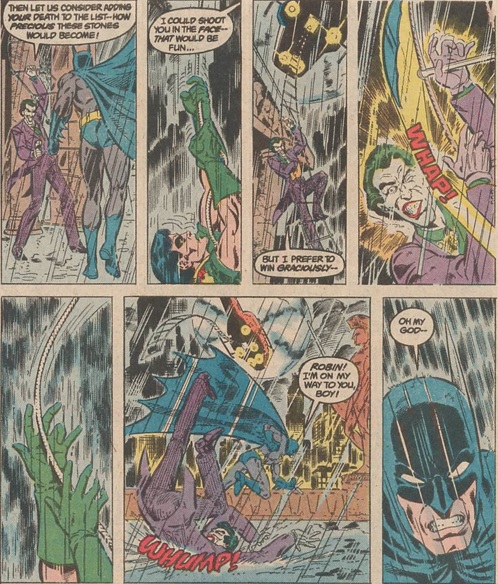
At the end of the film, the Joker's corpse is shown to have a grin on its face. This is similar to the Joker's death at the end of 'The Joker Returns' (Batman #1, 1940). Bob Kane and Bill Finger had originally intended to kill off the character in this scene, but later added an extra panel to reveal he had survived. The Joker in the film is not so lucky.
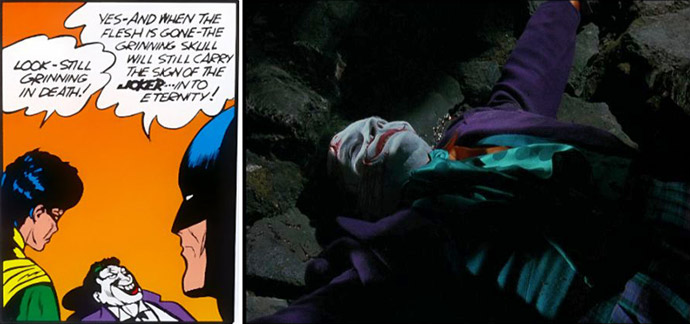
And that concludes this analysis of Tim Burton's Batman.
Discuss this feature here in the forum
comments powered by Disqus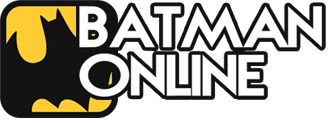
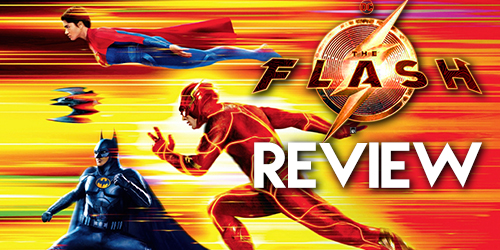
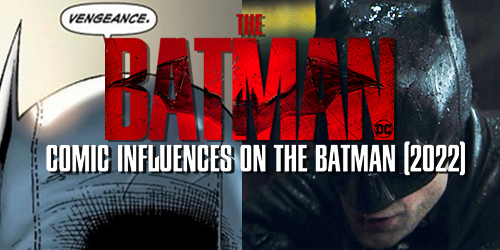
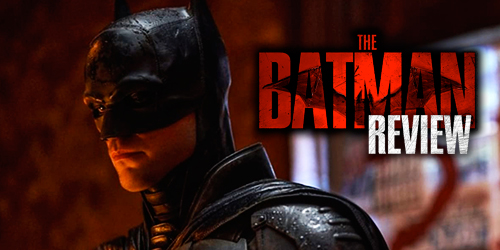

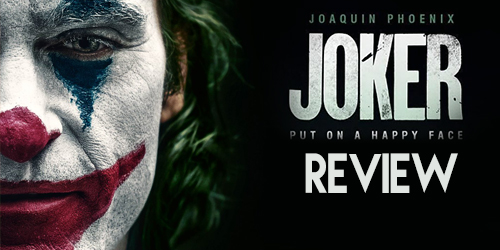
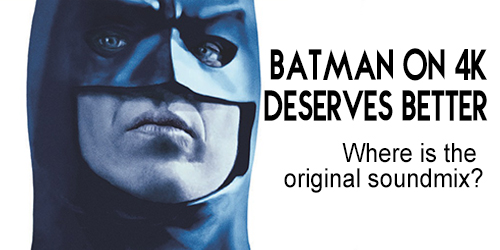
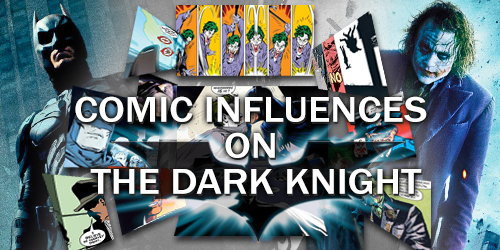

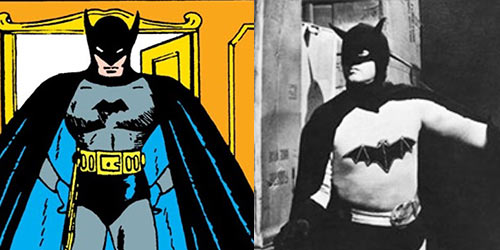
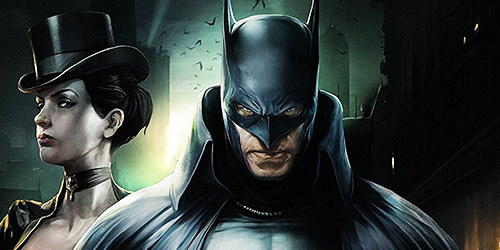
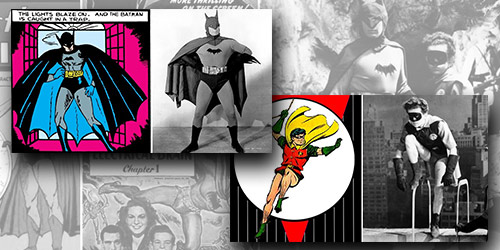
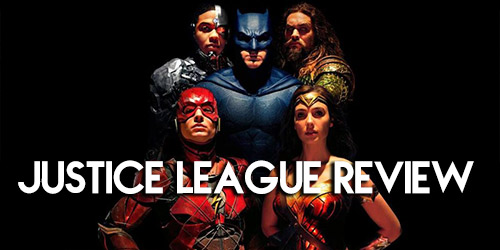
by Kamdan
by Silver Nemesis
by Silver Nemesis
by Gotham Knight
by The Joker
by The Joker
by Silver Nemesis
by The Joker
by The Laughing Fish
by The Laughing Fish